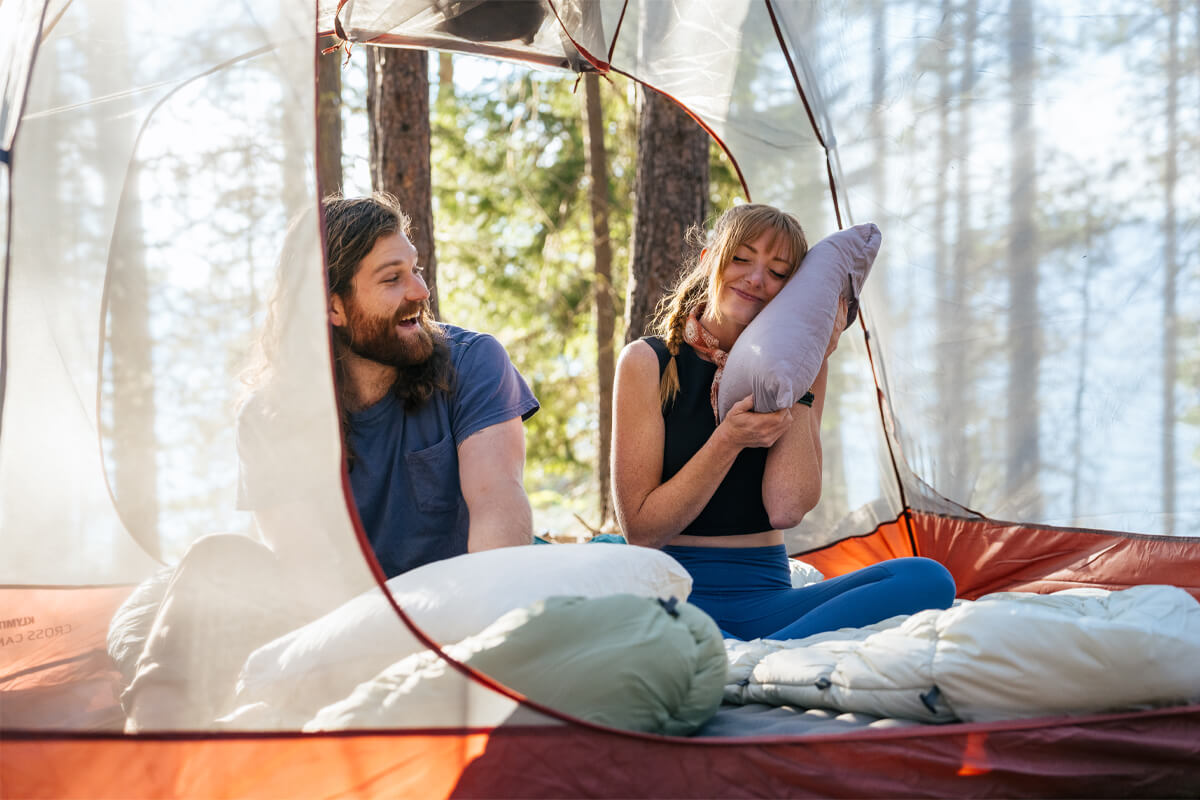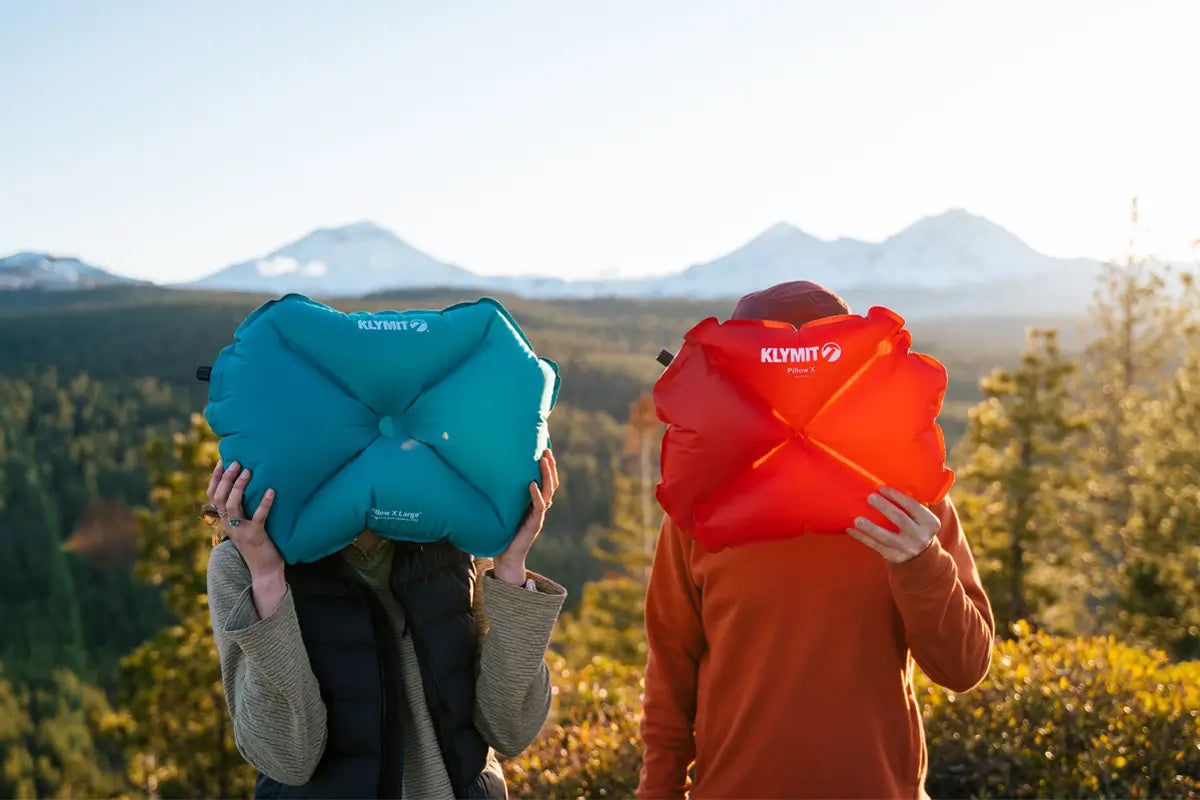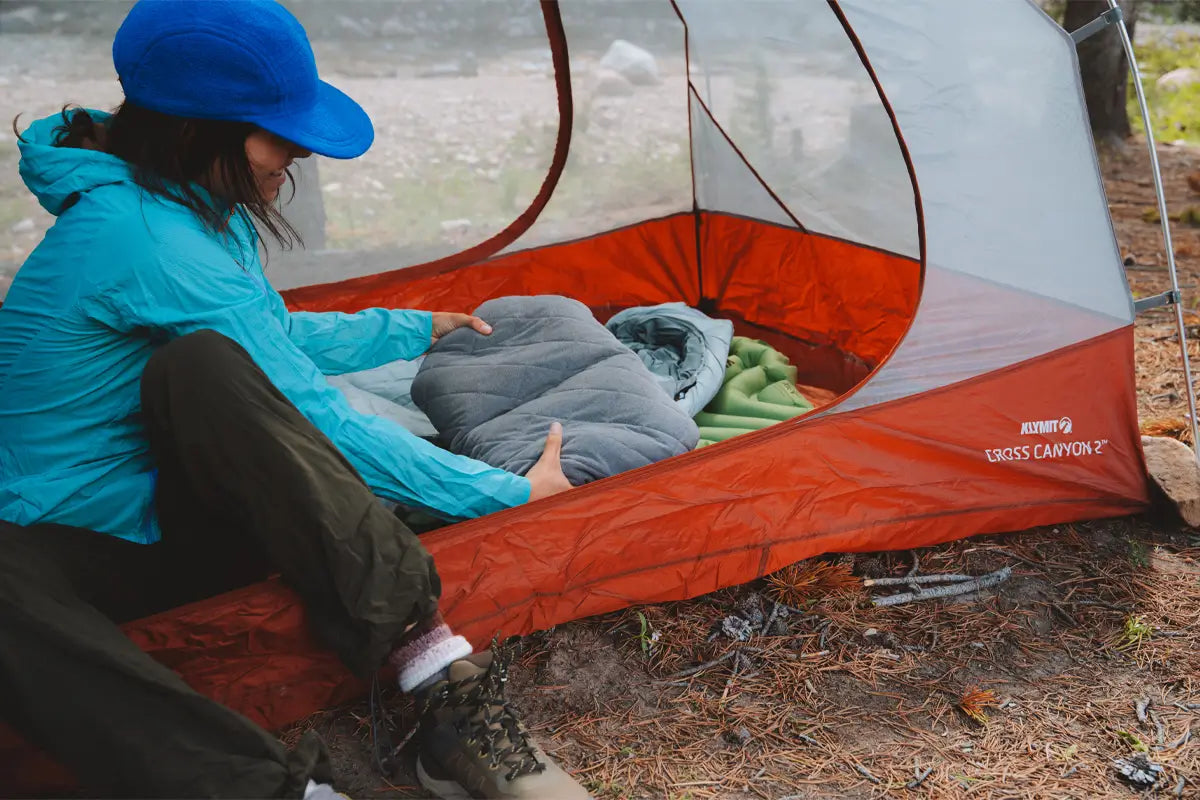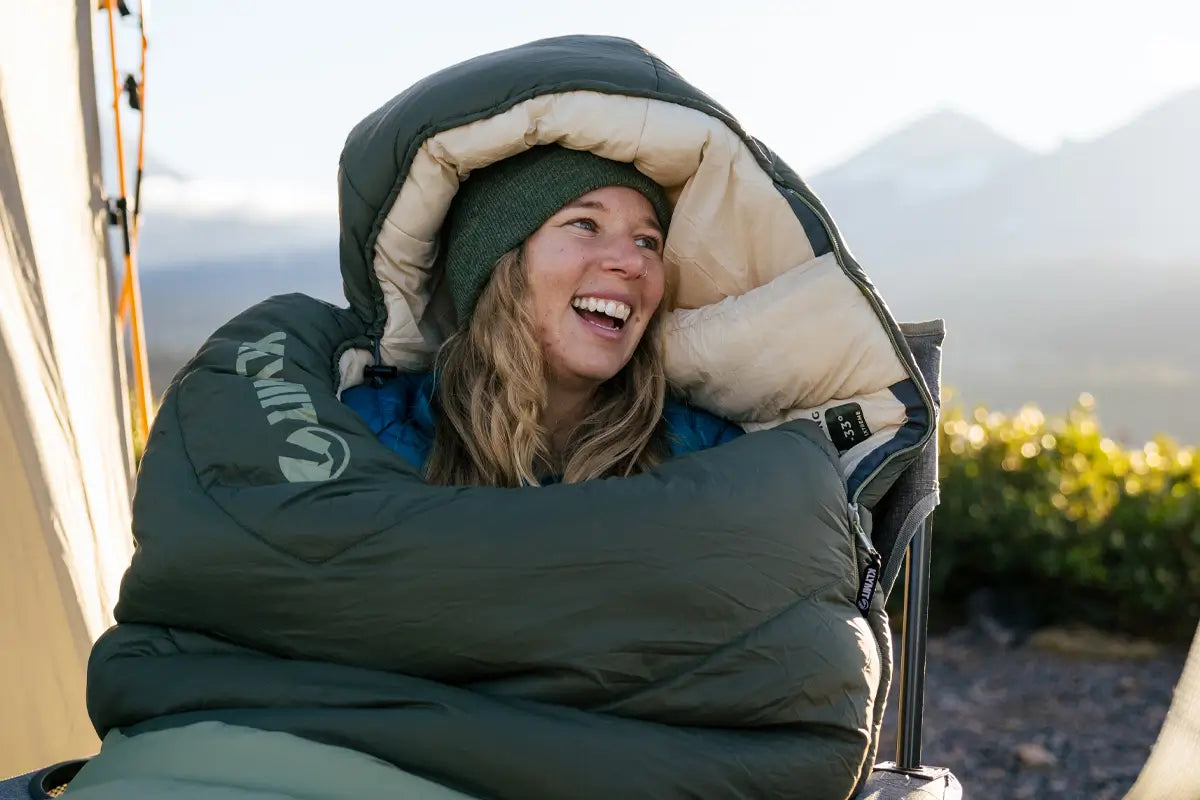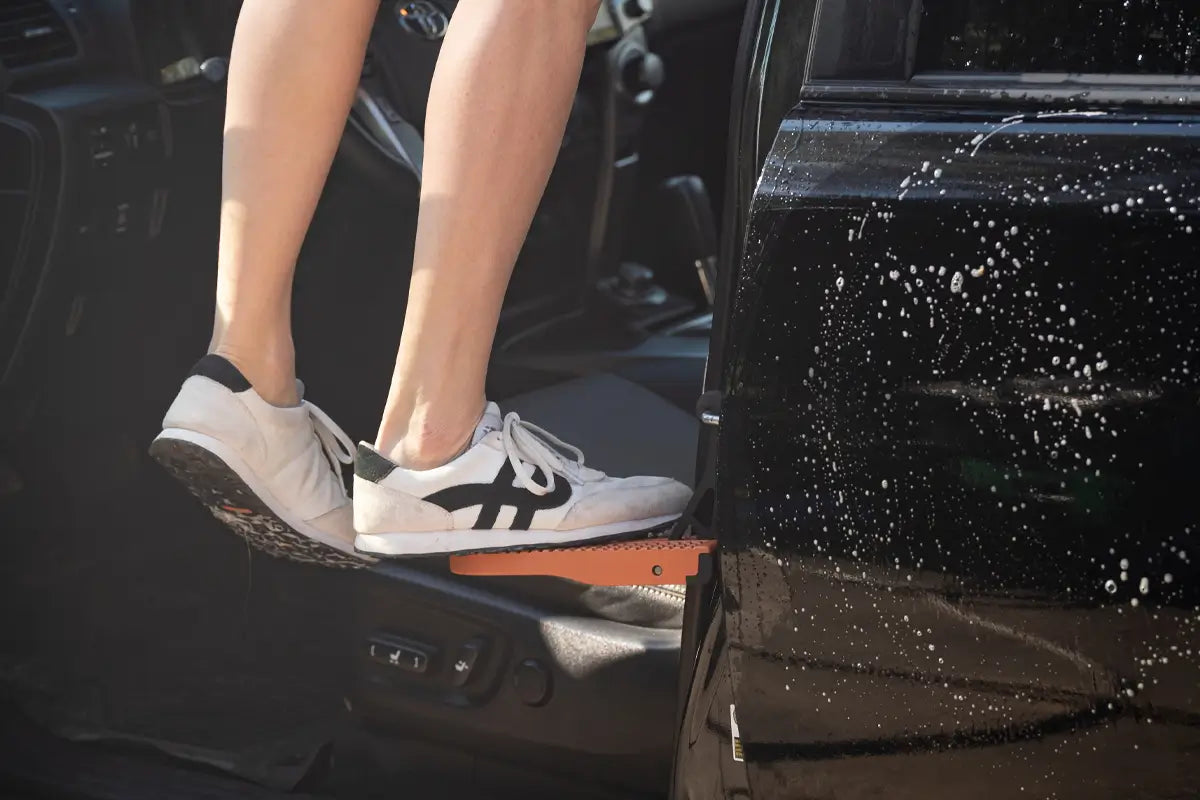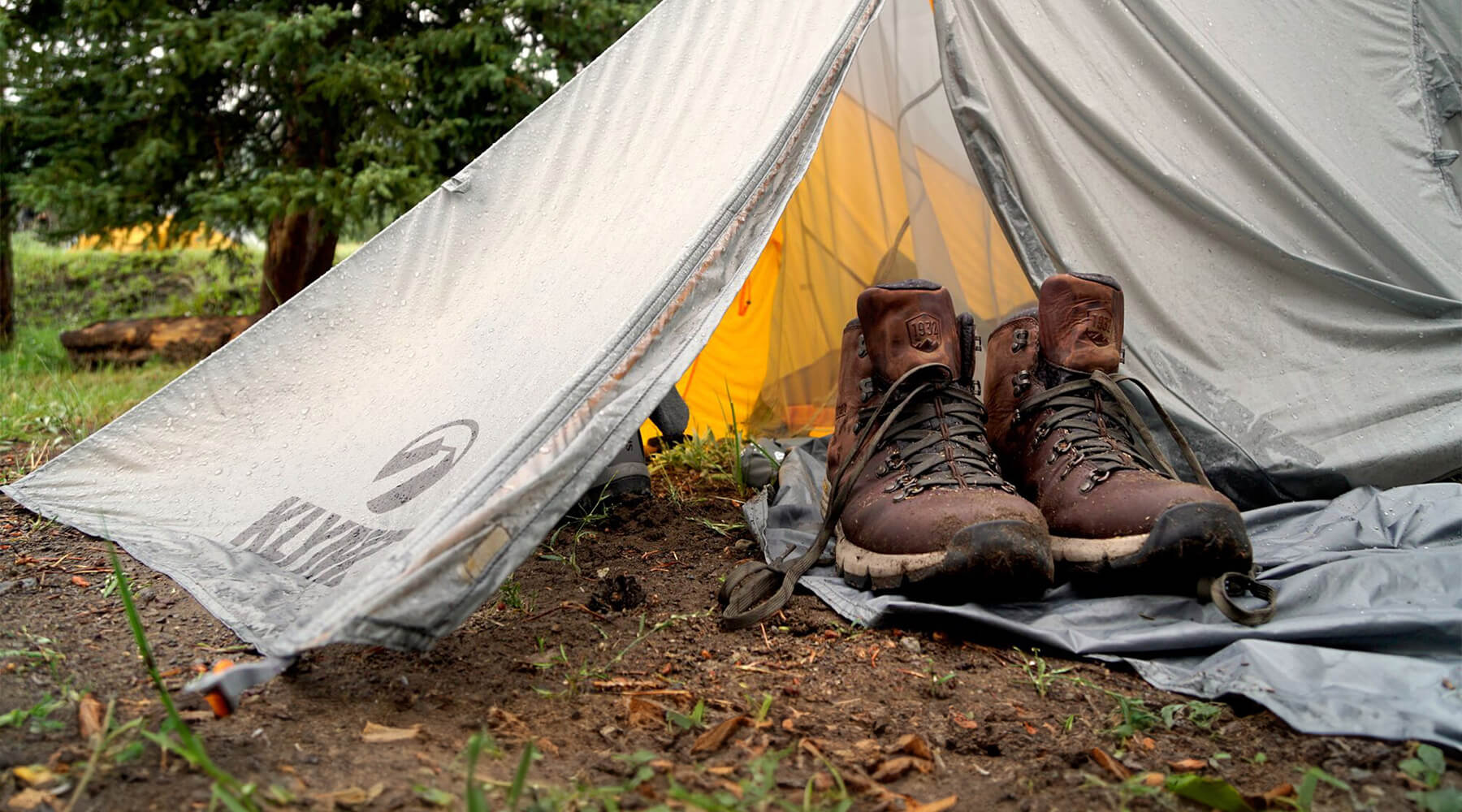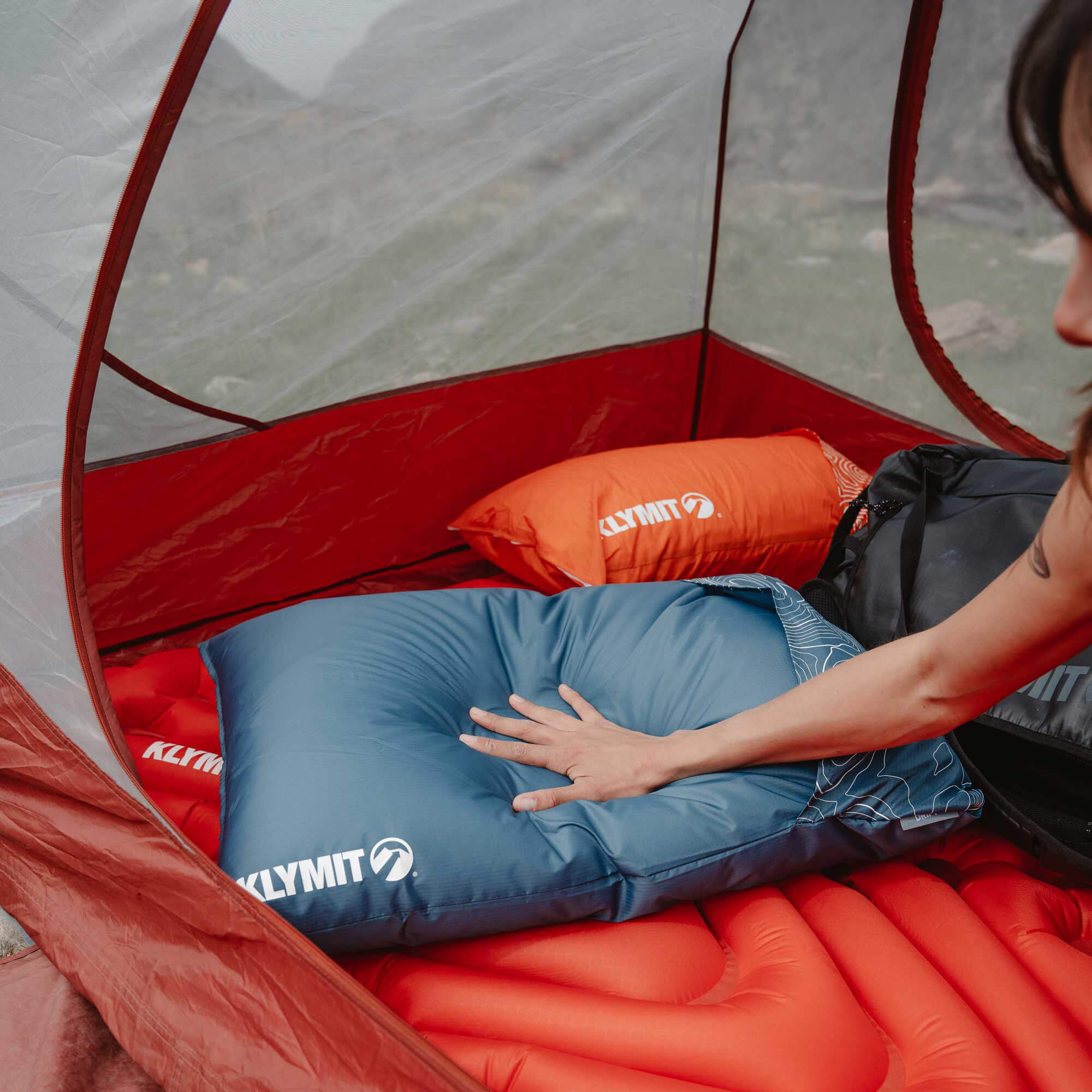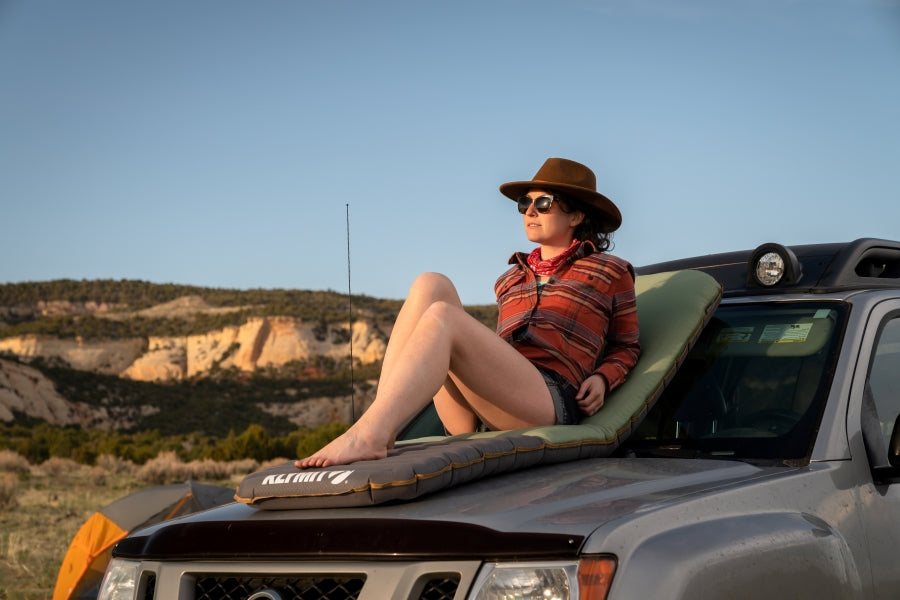Nicole Qualtieri from Gear Junkie reviewed our NEW Maxfield Tent series. Full review below.
Sturdy, roomy, and a breeze to pack up, the Maxfield two-person launches Klymit into the tent game with gusto!
Klymit’s recent entry into the tent biz is not a surprising one. But with its first run of development, the brand managed to secure a hold in the tent game with unique design elements that are both thoughtful and practical.
And, lucky me, I got to test those elements out in all sorts of conditions. I spent 4 days and 3 nights in Yellowstone National Park’s backcountry in the two-person Klymit Maxfield 2 Tent. Our crew went in with 12 llamas and 10 humans with an intent to hike, fish, and camp.
New to the market this fall, the Maxfield tent got me through a whole host of crazy moments. And — spoiler alert — it’s one of my favorite tents I’ve tested in the wild hills of the lower 48. Here’s the lowdown.
Klymit Maxfield 2-Person Tent Review
The first thing I noticed when I began unpacking the two-person Klymit was that, unlike the great majority of tents, this one isn’t stored in a bag. At least, the Maxfield isn’t in the traditional stuff sack.
The protective case unfolds into a rectangle that doubles up as a floor mat for your vestibule. Upon setting aside the floor mat/stuff sack, you’re left with the main tent, rainfly, a single tent pole, and stakes.
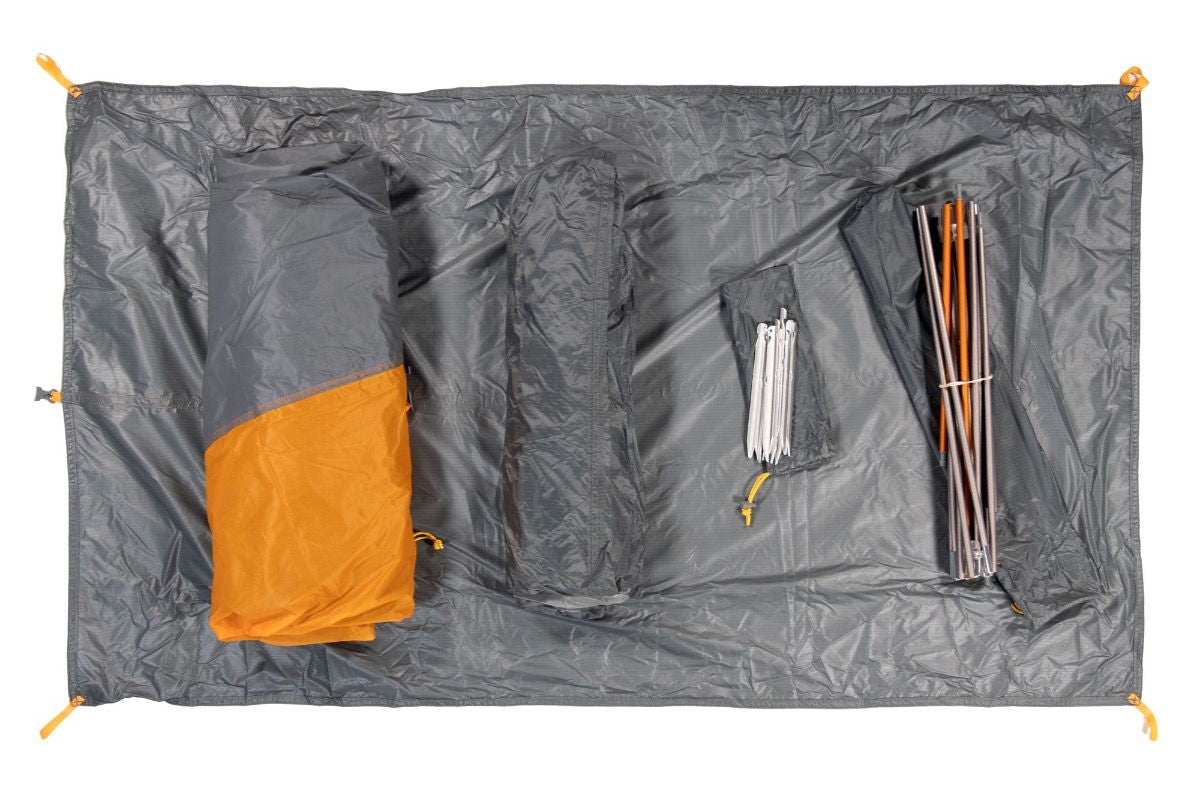
The Maxfield Tent stuff sack is a very clever and unique roll-up design
I like to attempt to set up tents without instructions in an effort to see how intuitive the setup is. And this tent was decently fluid to build. Upon snapping together the pole, I noted that the span is surprisingly big. The one piece of instruction I did receive beforehand was that this particular tent is easier to get together if you stake down the main body first. Klymit calls it a “semi-freestanding tent,” meaning you’ll need stakes to help the body stay upright. I did this, and it proved accurate.
I can definitely set up other tents more quickly, but I think I’ll gain speed as I become more familiar with the tent.
Taking the 4-pound 3-ounce Maxfield tent down proved surprisingly simple, thanks in large part to the unique stuff sack. Klymit specifically designed the roll-out/roll-up stuff sack to take the hassle out of breaking down camp in the morning. The idea is that you can lay the fly, tent body, poles, and stakes right on top of the sack, then roll it all up together — faster and easier than stuffing everything down.
Personally, I didn’t use the optional footprint, but you can use this setup in a fast fly scenario. This means you can attach the rainfly directly to the footprint with poles and stakes, and you’ll have a quick shelter up in no time.
Klymit Maxfield Tent Details
This is a front door tent rather than a double-side door. Some people may not be into it, but I like the tubular feel of this type of shelter. It’s also particularly roomy, with enough head space to sit up and move around in comfortably.

Bigger than most two-person backpacking tents I’ve tried, it’s still gonna be a cozy shoulder-to-shoulder experience with a backpacking partner. It’d be a tight squeeze for two bigger folks, but if you love your backpacking partner or it’s just a generally cuddly atmosphere, you’ll be just fine.
Storage is ample in the front vestibule. I fit my backpacking gear and fishing setup in there with ease, and I was left with plenty of room. The one note I felt with this rainfly is that the vestibule opening is very long and at the farthest point from the tent’s interior. In translation, it’s quite a stretch to get the thing totally closed.
I’m a big fan of interior pockets in tents. Cellphones, headlamps, GPS units, and bear spray are my mainstay close-by necessities when I’m in a shelter. And the Maxfield delivered on a few nice options for interior pockets. There are also a solid amount of external vents built into the rainfly that do a good job of keeping condensation to a minimum.
Because the Maxfield is partially dependent on stakes for stability, you have trouble setting up in particularly rocky areas. But if you had the ability to guy out to some large rocks or trees, you might be able to make it work. But it’s certainly something to think about in regards to the landscapes you find yourself traversing.
Klymit Maxfield 2-Person Tent Specs
- Pack weight: 6 lbs
- Trail weight: 5.4 lbs
- Floor area: 31 sq. ft.
- Vestibule area: 15 sq. ft.
- Peak height: 46″
- Usage: 3-season
-
Price: $209.99
Klymit Maxfield Tent: Weatherproof
Our 4-day trek into the backcountry of Yellowstone National Park was not without challenges. Specifically, our challenge was the weather. Within minutes of getting our tents set up for the first night, a massive thunderstorm rolled over us. We crawled into our newly assembled tents and waited out the storm for over an hour. Rain and small hail pelted the tent, while wind pushed through the site in swift bursts.

The storms awaiting us at camp, building on the horizon
Although it wasn’t the lay-out-on-a-sunny-river-rock weather I was craving, it was ideal weather to test a tent. And it really didn’t let up until the next morning. Even without the footprint, I stayed completely dry, as did my gear. And the vent design kept the rain out while keeping air circulating.
I’ll even add that some of the fellas on my trip placed their Maxfields in slightly depressed areas that gathered up a whole bunch of rain. And still, their gear stayed dry. Ace work on weatherproofing, Klymit.
Final Thoughts
All in all, I’m pretty pumped to have the Klymit Maxfield in my gear coffer. I certainly trust its three-season rating to keep the weather at bay, and I’m tickled at the slick way this sucker packs up. At just over 4 pounds, I think this tent is a little bit heavy to be a long-distance backpacking option.
And at $209.99, the price point is not abnormally expensive. But if you’re looking for a more lightweight shelter solution, this is likely not the right buy.
However, the Maxfield does make a great multipurpose option with plenty of space for two folks. It serves up an innovative packing solution, a tested weather-beater, and a great first tent from the folks at Klymit


